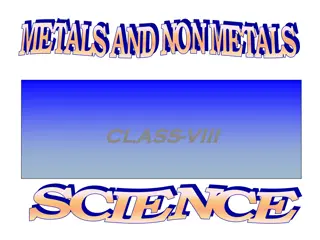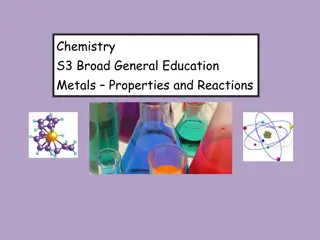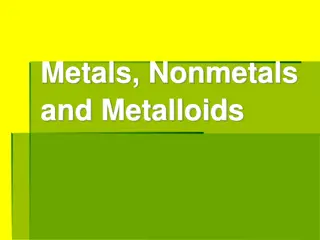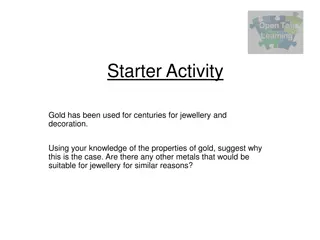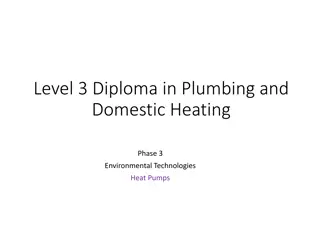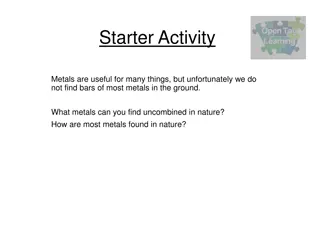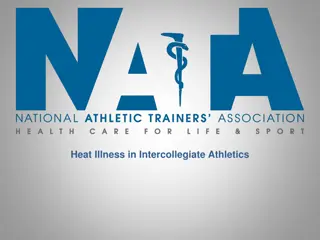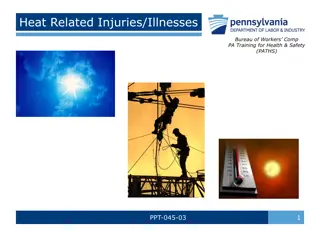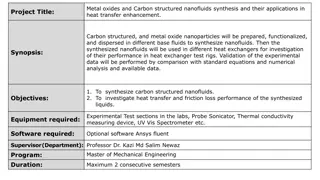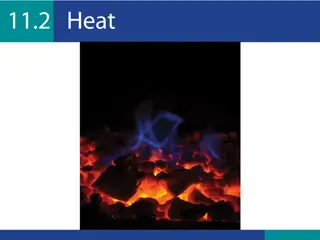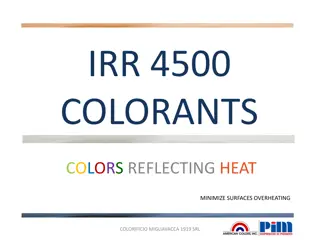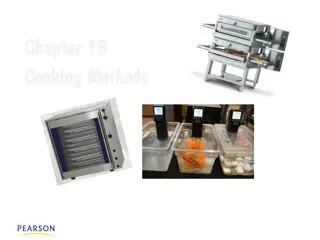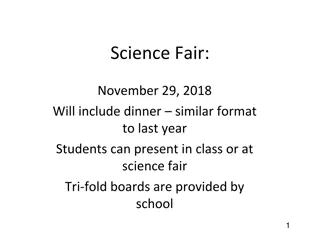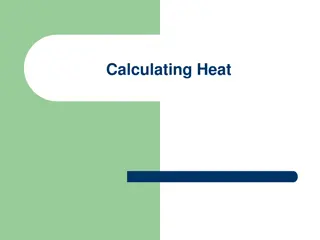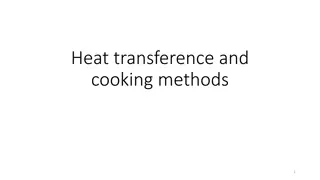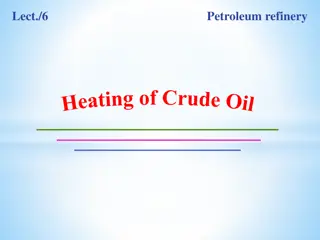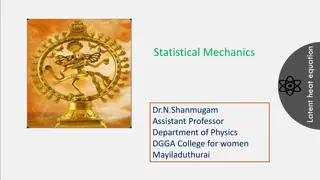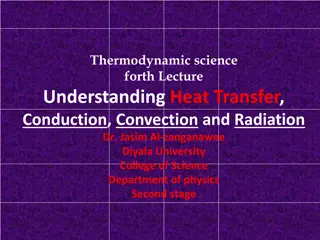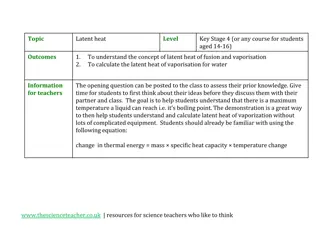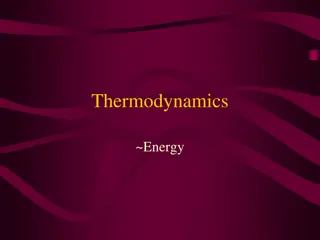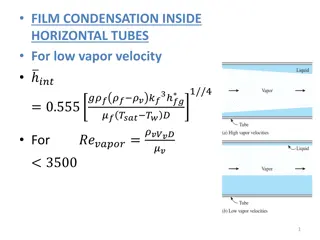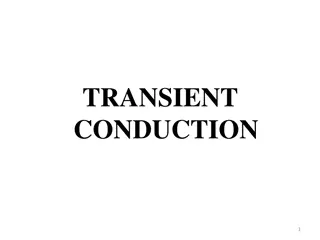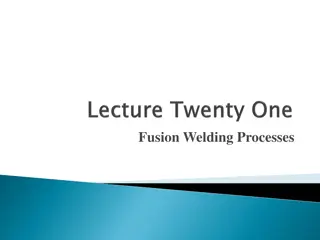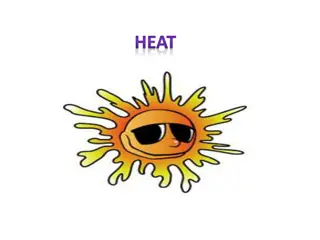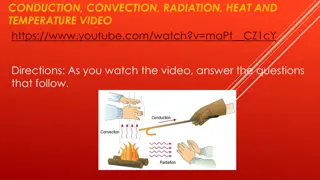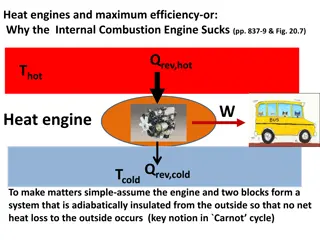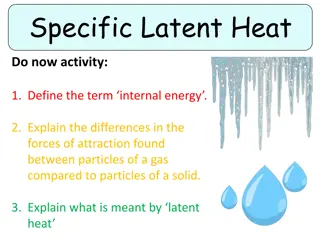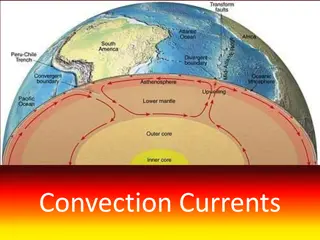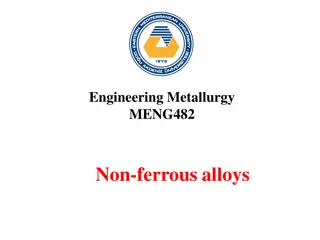Understanding Metals: Properties and Heat Treatment Processes
Metals can be categorized into ferrous and non-ferrous based on the presence of iron. Ferrous metals contain iron, while non-ferrous metals do not. Each type has distinct properties like toughness, tensile strength, elasticity, plasticity, ductility, malleability, and hardness. Heat treatment processes such as hardening, tempering, and annealing can modify the physical properties of metals, improving characteristics like toughness, hardness, and wear resistance.
Download Presentation

Please find below an Image/Link to download the presentation.
The content on the website is provided AS IS for your information and personal use only. It may not be sold, licensed, or shared on other websites without obtaining consent from the author. Download presentation by click this link. If you encounter any issues during the download, it is possible that the publisher has removed the file from their server.
E N D
Presentation Transcript
MECHANOTECHNOLOGY N3 MALUTI TVET COLLEGE LECTURER : MT MPHAGO ITEMOHELENG CAMPUS
MODULE 12 MATERIAL AND MATERIAL PROCESS LO : Explain and understand the difference between ferrous and non- ferrous metals, iron and alloy and discuss the general behaviour of specific materials during specific workshop process. ITEMOHELENG CAMPUS
METALS The property that separates the metals is whether they contain iron or not. We have two groups, ferrous and non-ferrous metals. FERROUS METALS NON FERROUS METALS Contain iron, and the common used are cast iron and plain carbon steel. Contains no iron as a basic metal, and most common used are copper, aluminum, lead, tin and zinc. Iron is alloyed with carbon or other elements like tungsten, nickel, silicon, sulphur and manganese. They are non magnetic and corrosion resistance. These elements in various portions give metal specific properties like heat resistance, elasticity plasticity and toughness. Have electrical conductivity and they mechanical strength is low. Iron is called ferrite, a soft grey metal and obtained from a mined ore. We can improve their mechanical properties by alloying them together. Steel is an alloy of iron and carbon which gives steel certain properties that makes it useful for certain applications. Alloy can be defined as a combination of iron and carbon. ITEMOHELENG CAMPUS
PROPERTIES OF METALS Toughness It is the ability of a metal to withstand resistance force impact or hammering load. It has the ability to resist fracture when subjected to continuous bending forces in opposite directions. Tensile strength Is a measure of the ability of a metal to resist force acting to pull it apart and withstand stretching load without breaking. Elasticity Is a measure of the ability a metal to be deformed under load and yet return to its original shape when load is removed. Plasticity Is a measure of a metal to be deformed under load and then retain the new shape when load is removed. Ductility Is the property that permits a metal to withstand considerable elongation under tension before breaking apart. Malleability Metals having the ability of being permanently extended in all directions by hammering , bending , twisting or rolling without cracking or breaking. Hardness Is a measure of the ability of a metal to withstand starching, cutting or rubbing by other body or hard material. ITEMOHELENG CAMPUS
HEAT TREATMENT PROCESSES HARDENING TEMPERING ANNEALLING Heat treatment is the process whereby the physical properties of a metal usually steel are changed by heating it up to a certain temperature and then cooling it down. Toughness , hardness and wear are some of the properties that can be improved by various heat treatment processes. Below is processes and purposes of each. quenching medium such water. quench it in water or oil. Steel is heated at a predetermined temperature and then quenched rapidly in a Steel is heated in its harden state to a tempering temperature and then Is done by slowly heating steel to a certain temperature and then allowing it to cool down very slowly. The purpose of tempering is removes the stresses and strains induced by hardening. Its purpose is soften steel so that it can be machined easily and to reduce grain structure. The purpose of hardening is to harden steel. To release internal stresses that have been set up during previous working of metals. The other purpose is to enable steel to resist wear and to cut other metals. The other purpose is to reduce brittleness and increase toughness. NORMALISING CASE HARDENING Low carbon steel is heated in a furnace to weaken steel and refine grain. This produces hard surface skin with a thickness of 1 to 2 mm. Steel is heated slowly to a normalizing temperature and then allow it to cool in air. The purpose for normalizing is to refine steel structure and obtain uniform structure. Results of case hardening are the hard out layer that present a good wearing surface. To remove strains and stresses caused by cold working and to improve steel strength. The strong and tough inner core which is hardened but can resist all the shock loads to be carried by the work-piece. ITEMOHELENG CAMPUS
COLOUR CODING OF METALS METAL COLOUR Low carbon steel Orange High carbon steel Brown Case hardened steel Orange Low alloy steel Light purple Structural steel Red Steel for pressure containers White Stainless steel Black Carbon and alloy spring steel Black Silicon chrome steel Black Cast steel Blue Pipeline steel Grey Steel for lifting machines Green ITEMOHELENG CAMPUS
METAL BEHAVOIUR METAL HAMMER HACKSAW ARC WELDIND GAS WELDING Pull and spatter when current is too strong, and welds easy at low temperature. Soft metal with low carbon content and flattens easily. Cut easily and leave clean fillings. Welds easily and neatly using neutral flame. Low carbon steel Light and soft. Flattens and tear easily. Its strength is increased by hammering. Cut easily with liquids like paraffin and leaves clean fillings. No colour change when heated. Heat soften the metal. Overheating causes sagging and collapsing. No colour change when heat. Aluminum Become brittle near its welding point and melt quickly. Contracts easily than steel. Tensile strength decrease rapidly. Become brittle near its welding point and melt quickly. Contracts easily than steel. Tensile strength decrease rapidly. Can be cut easily and leave clean fillings. Soft and flexible and flattens easily. Copper Has low impact properties and crumble easily. Can be cut easily and leaves black dusty fillings. Difficult to weld and change to white cast iron when heated. Difficult to weld and burn when overheated. Cast iron Tough material and difficult to reform or flatten. Strength is increased by cold working. Heating reduces the corrosion resistance properties of the metal. Produces distortion and grain growth. Heating reduces the corrosion resistance properties of the metal. Produces distortion and Difficult to saw and hardens with friction. ITEMOHELENG CAMPUS grain growth. Stainless steel
SUMMARY Introduction Lubrication of bearings , gearboxes, compressor and combustion engines. Oil filtering. Lubrication methods. Cooling of engines, compressors, electric motors and welding machines. Air cooling systems Water cooling systems Advantages and disadvantages of impeller assisted cooling system over thermosyphon cooling system. Heat exchanger and oil coolers. Overcooling and overheating. Causes and results, and how to prevent it. ITEMOHELENG CAMPUS
ASSESSMENT On page 240 & 241 of the textbook supplied by the college. Mechanotechnology N3 second edition. by FM GOUWS. 1, 4, 6, 9 & 10. . CONTACT ME ON WHATSUP FOR ANY QUESTIONS THAT YOU MAY HAVE. MY NUMBER IS 073 215 7689 THANK YOU. ITEMOHELENG CAMPUS


